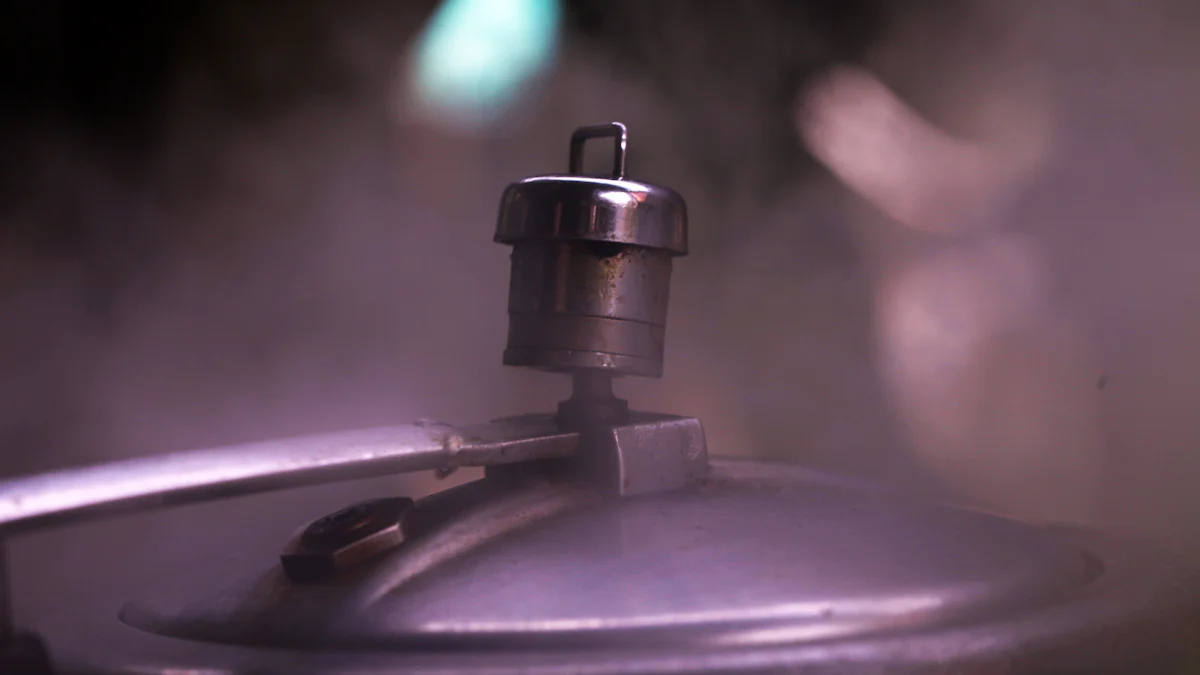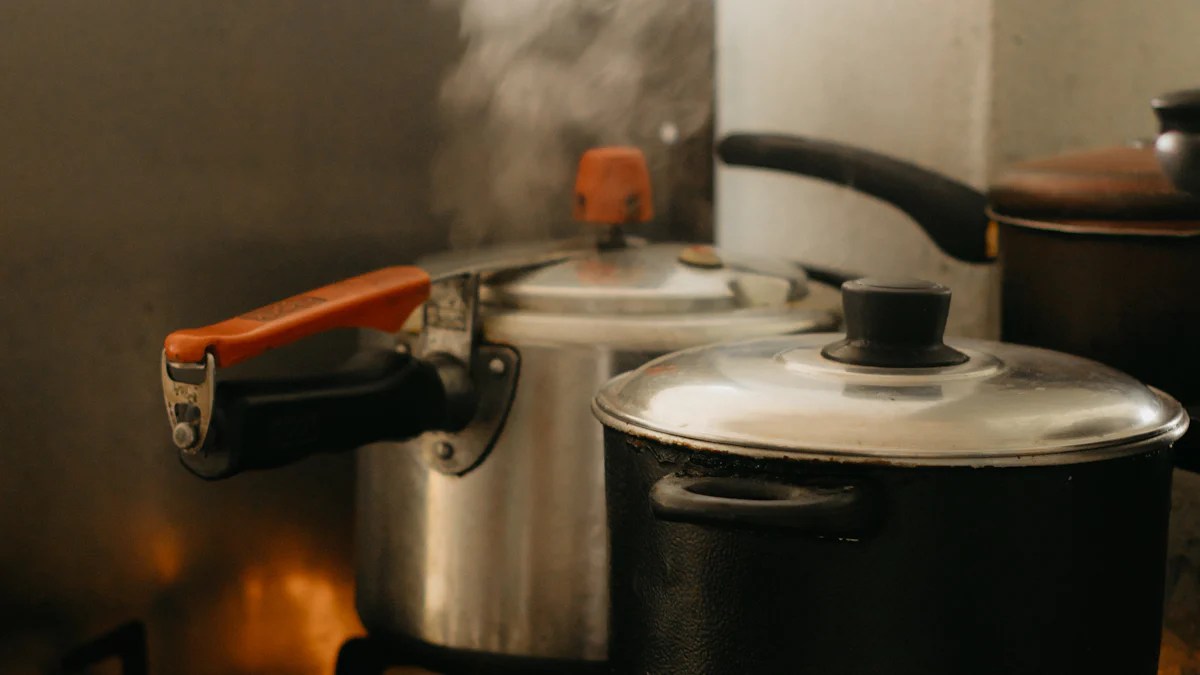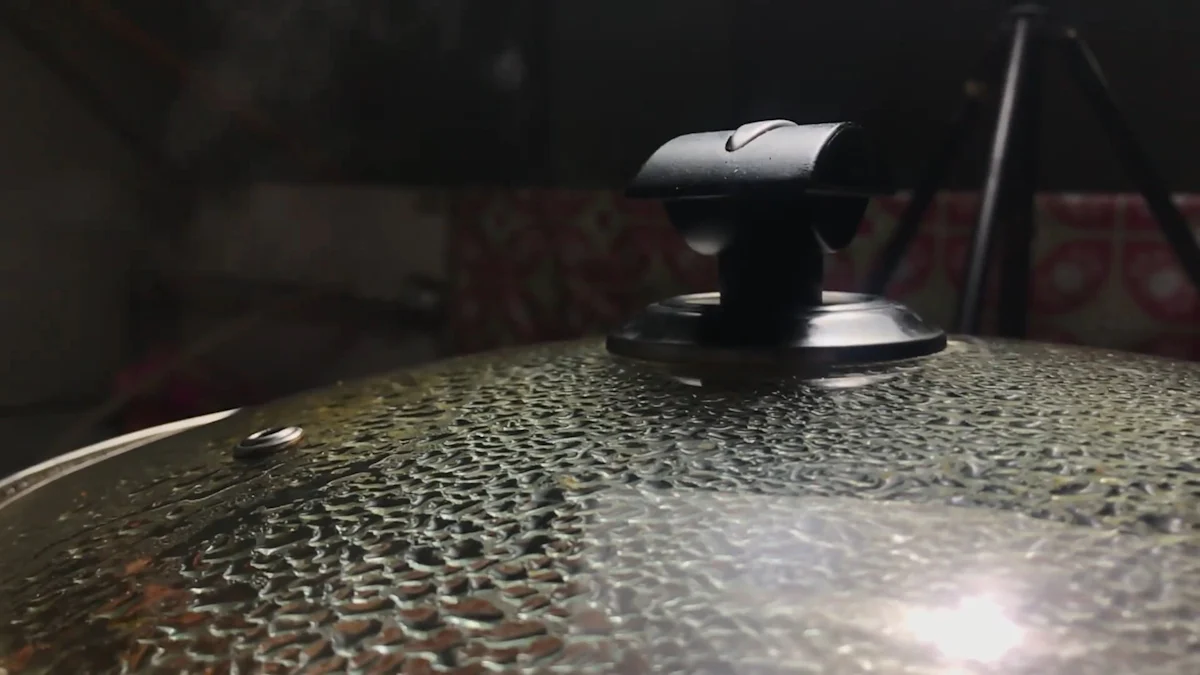How to deal with broken pressure cooker accessories like cooker handles and spare parts

Broken pressure cooker accessories can disrupt your cooking routine and pose serious safety risks. A cracked handle or a worn-out gasket might seem minor, but these issues can lead to accidents like rapid steam release or even explosions. Studies reveal that user errors and faulty parts are common causes of pressure cooker mishaps. Ensuring your pressure cooker functions properly is essential for both safety and efficiency. Fortunately, solutions like repairing or replacing damaged components, such as pressure cooker spare parts, are readily available to restore your device to optimal condition.
Key Takeaways
- Regularly inspect your pressure cooker accessories, such as handles and gaskets, to identify signs of wear or damage early.
- Replace worn-out gaskets and handles promptly to ensure your pressure cooker maintains proper pressure and safety during use.
- Consult the manufacturer’s website or authorized dealers for compatible spare parts to guarantee safety and functionality.
- Perform basic repairs, like tightening screws or replacing gaskets, using the right tools to extend the life of your pressure cooker.
- Adopt regular maintenance practices, including thorough cleaning and proper storage, to prevent future issues and enhance safety.
- Follow the manufacturer’s care guidelines to avoid common mistakes and ensure optimal performance of your pressure cooker.
Identifying the Problem
Understanding the signs of broken pressure cooker accessories and their roles is crucial for maintaining safety and efficiency. This section will help you identify common issues and recognize the importance of each part in your pressure cooker.
Common Signs of Broken Accessories
Cracked or loose cooker handles
A cracked or loose handle can make your pressure cooker unsafe to use. You might notice wobbling when lifting the cooker or visible fractures in the handle material. These issues compromise stability and increase the risk of accidents, especially when handling hot food or steam.
Worn-out gaskets or seals
Gaskets or seals that appear brittle, cracked, or misshapen are clear indicators of wear. A worn-out silicone gasket often fails to maintain a proper seal, leading to steam leakage. This not only affects cooking performance but also poses safety risks by preventing the cooker from building adequate pressure.
Malfunctioning safety valves or pressure indicators
A faulty safety valve or pressure indicator can disrupt the pressure regulation process. If the valve doesn’t release excess pressure or the indicator doesn’t rise as expected, it signals a malfunction. Ignoring these signs can lead to dangerous pressure buildup inside the cooker.
Understanding the Role of Each Part
Handles for safe handling and stability
Pressure cooker Bakelite Handles provide a secure grip, allowing you to move the pressure cooker safely. They are typically made from heat-resistant materials like Bakelite to prevent burns. Damaged handles reduce stability and increase the likelihood of accidents during use.
Gaskets for maintaining pressure and sealing
The gasket acts as a seal between the lid and the base of the cooker. It ensures that steam remains trapped inside, enabling the cooker to build and maintain pressure. A damaged gasket disrupts this process, leading to inefficient cooking and potential safety hazards.
Safety valves for pressure regulation and safety
The safety valve plays a critical role in releasing excess pressure to prevent dangerous situations. It acts as a fail-safe mechanism, ensuring that the cooker operates within safe pressure limits. A malfunctioning valve compromises this safety feature, making immediate replacement necessary.
Regularly inspecting these components can help you identify problems early and take corrective action. Replacing damaged parts with compatible pressure cooker spare parts ensures your cooker remains functional and safe to use.
Repairing or Replacing Broken Accessories

When dealing with broken pressure cooker accessories, you must decide whether to repair or replace the damaged parts. This decision depends on the severity of the issue and the availability of compatible spare parts. Below, you’ll find guidance on making the right choice, sourcing reliable components, and performing basic repairs.
Deciding Between Repair and Replacement
Minor handle damage (e.g., loose screws) vs. severe cracks
For minor handle issues, such as loose screws, a simple tightening can restore functionality. However, severe cracks compromise the structural integrity of the handle. In such cases, replacing the handle ensures safety during use. Always inspect the material of the handle. Most pressure cooker handles are made from heat-resistant materials like Bakelite, which require genuine replacements for durability.
Gaskets that are worn out or cannot be resealed
A gasket that shows signs of brittleness or cracking should be replaced immediately. Attempting to reseal a worn-out gasket often results in poor performance and safety risks. Replacing the gasket with a compatible one ensures the pressure cooker maintains proper sealing and pressure levels.
Faulty safety valves that compromise functionality
A malfunctioning safety valve poses significant risks. If the valve fails to release excess pressure, it can lead to dangerous situations. Replacing the valve is the safest option. Ensure the replacement valve matches your pressure cooker model to maintain its functionality.
Expert Tip: “It’s generally not recommended to attempt repairs on your pressure cooker yourself, especially if you’re not familiar with the appliance. Consult the manufacturer’s instructions or contact a professional for repairs.” – Vinod Steel Experts
Finding Compatible Pressure Cooker Spare Parts
Checking the manufacturer’s website or authorized dealers
Start by visiting the manufacturer’s website or contacting authorized dealers. These sources provide genuine pressure cooker spare parts that match your appliance. Using original parts ensures compatibility and safety.
Identifying the model number of your pressure cooker
Locate the model number of your pressure cooker, usually found on the base or handle. This information helps you find the exact spare parts needed for your cooker. Without the correct model number, you risk purchasing incompatible components.
Exploring trusted online marketplaces or local stores
Online marketplaces and local stores often stock a variety of pressure cooker spare parts. Look for trusted sellers with positive reviews to ensure the quality of the parts. Avoid generic or unbranded components, as they may not meet safety standards.
DIY Repair Tips for Common Issues
Tools required for basic repairs
To perform basic repairs, gather tools such as a screwdriver, pliers, and a wrench. These tools help you tighten screws, replace handles, or install new gaskets. Keep a clean workspace to avoid losing small parts during the process.
Step-by-step guide to replacing handles or gaskets
-
Handle Replacement:
- Remove the screws securing the damaged handle.
- Align the new handle with the screw holes.
- Secure the handle tightly using a screwdriver.
-
Gasket Replacement:
- Remove the old gasket from the lid.
- Clean the groove where the gasket sits to remove debris.
- Place the new gasket into the groove, ensuring it fits snugly.
Note: If you feel unsure about performing repairs, seek professional assistance. Incorrect repairs can lead to further damage or safety hazards.
By following these steps, you can restore your pressure cooker’s functionality and extend its lifespan. Always prioritize safety when handling repairs or replacements.
Preventing Future Issues

Preventing issues with your pressure cooker requires consistent care and attention. By adopting regular maintenance practices and following best usage guidelines, you can ensure your pressure cooker remains safe and functional for years.
Regular Maintenance Practices
Cleaning and inspecting parts after each use
After every use, clean your pressure cooker thoroughly. Remove food residues from the lid, gasket, and safety valve. Inspect these parts for signs of wear or damage. A quick visual check can help you spot cracks, loose screws, or worn-out seals before they become serious problems. Regular cleaning also prevents food debris from clogging the safety valve, which is essential for maintaining proper pressure regulation.
Proper storage to avoid damage
Store your pressure cooker in a dry, cool place. Avoid stacking heavy items on top of it, as this can cause dents or cracks in the lid or body. Keep the gasket separate from the cooker to prevent it from becoming misshapen. Proper storage minimizes the risk of accidental damage and ensures the cooker is ready for use when needed.
Replacing worn-out parts proactively
Replace parts like gaskets, handles, and safety valves as soon as they show signs of wear. Waiting until these components fail can lead to safety hazards. Manufacturers recommend replacing gaskets every 12 to 18 months, depending on usage. Using compatible pressure cooker spare parts ensures the replacement components fit perfectly and maintain the cooker’s functionality.
Pro Tip: Regular maintenance not only extends the life of your pressure cooker but also reduces the risk of accidents caused by faulty components.
Best Practices for Prolonging the Life of Your Pressure Cooker
Avoiding over-tightening components
When assembling your pressure cooker, avoid over-tightening the lid or screws. Excessive force can damage threads or deform the gasket, leading to poor sealing. Tighten components just enough to create a secure fit without straining the material.
Using the cooker within recommended pressure limits
Always operate your pressure cooker within the pressure limits specified by the manufacturer. Exceeding these limits can strain the safety valve and other components, increasing the risk of malfunctions. Monitor the pressure indicator during cooking to ensure the cooker is functioning correctly.
Following the manufacturer’s care guidelines
Refer to the user manual for specific care instructions. Manufacturers provide detailed guidelines on cleaning, maintenance, and part replacements. Adhering to these recommendations helps you avoid common mistakes and ensures your pressure cooker performs optimally.
Scientific Research Findings: Studies emphasize that regular maintenance and cautious use are critical for preventing accidents and extending the lifespan of pressure cookers. Simple steps, such as inspecting parts and following care guidelines, can make a significant difference.
By implementing these practices, you can keep your pressure cooker in excellent condition. Regular maintenance and mindful usage not only enhance safety but also preserve the efficiency of this valuable kitchen tool.
Properly identifying, repairing, or replacing broken pressure cooker accessories ensures your safety and maintains the efficiency of your appliance. Regular maintenance plays a vital role in extending the lifespan of your pressure cooker, keeping it in excellent working condition for years. By addressing issues early and following best practices, you can prevent accidents and enjoy hassle-free cooking. Take action today—inspect your pressure cooker, replace worn-out parts with compatible spares, or consult a professional if needed. A well-maintained pressure cooker guarantees safe, quick, and efficient meal preparation for your household.
FAQ
What types of cookware can you use in a pressure cooker?
You can use stainless steel or aluminum cookware in most pressure cookers. These materials distribute heat evenly and resist warping under high pressure. Avoid using glass or ceramic cookware, as they may crack or shatter. Always check your pressure cooker’s manual for specific recommendations.
Can you repair a broken pressure cooker handle yourself?
Yes, you can fix a broken handle if the damage is minor, such as loose screws. Use a screwdriver to tighten the screws or replace them if necessary. For severe cracks, replace the handle entirely. Follow the manufacturer’s instructions to ensure proper installation. If unsure, consult a professional to avoid safety risks.
How often should you replace the gasket in your pressure cooker?
Replace the gasket every 12 to 18 months, depending on how frequently you use your pressure cooker. Inspect it regularly for signs of wear, such as cracks or brittleness. A damaged gasket compromises the cooker’s ability to maintain pressure, so timely replacement is essential for safety and performance.
Where can you find compatible spare parts for your pressure cooker?
You can find spare parts on the manufacturer’s website or through authorized dealers. Trusted online marketplaces and local stores also stock a variety of parts. Ensure you know your pressure cooker’s model number to purchase compatible components. Avoid generic parts that may not meet safety standards.
Is it safe to use an old-fashioned pressure cooker for modern recipes?
Yes, you can use an old-fashioned pressure cooker for modern recipes, provided it is in good working condition. Check the safety valve, gasket, and handles for any damage. Replace worn-out parts before use. Modern recipes may require adjustments in cooking time or pressure levels, so follow the recipe instructions carefully.
What should you do if the safety valve malfunctions?
Stop using the pressure cooker immediately if the safety valve malfunctions. A faulty valve can lead to dangerous pressure buildup. Replace the valve with a compatible one from the manufacturer or an authorized dealer. Never attempt to repair a damaged safety valve yourself.
How can you prevent your pressure cooker from getting damaged during storage?
Store your pressure cooker in a cool, dry place. Keep the gasket separate to prevent it from becoming misshapen. Avoid stacking heavy items on top of the cooker to prevent dents or cracks. Proper storage ensures your pressure cooker remains in good condition and ready for use.
Can you use your pressure cooker without a gasket?
No, you cannot use a pressure cooker without a gasket. The gasket creates a seal that allows the cooker to build and maintain pressure. Operating without a gasket leads to steam leakage and prevents the cooker from functioning properly. Always replace a missing or damaged gasket before use.
What tools do you need for basic pressure cooker repairs?
For basic repairs, you need a screwdriver, pliers, and a wrench. These tools help you tighten screws, replace handles, or install new gaskets. Keep a clean workspace to avoid losing small parts. If you lack the necessary tools or expertise, seek professional assistance.
How can you extend the lifespan of your pressure cooker?
Clean and inspect your pressure cooker after each use. Replace worn-out parts like gaskets and safety valves proactively. Avoid over-tightening components and operate the cooker within recommended pressure limits. Follow the manufacturer’s care guidelines to ensure your pressure cooker remains safe and functional for years.
Post time: Dec-25-2024
